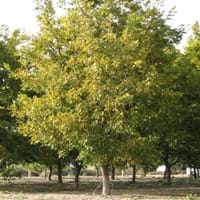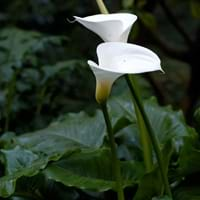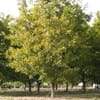Life Span
Perennial
Perennial
Type
Tree
Bulb, Flowering Plants
Origin
Southeastern United States, Central United States, South-Central United States, Mexico
South Africa, Swaziland
Types
Elliot Pecan, Gafford Pecan
Passionfruit, Fire glow, Gem rose, Blaze, Crystal blush
Habitat
Loamy soils, Moist woods, Tropical regions
Swamps
USDA Hardiness Zone
5-9
8-10
Sunset Zone
2b, 3a, 3b, 6, 7, 8, 9, 10, 12, 13, 14, 18, 19, 20
2a, 2b, 5, 6, 8, 9, 12, 13, 14, 15, 16, 17, 18, 19, 20, 21, 22, 23, 24
Habit
Upright/Erect
Clump-Forming
Flower Color
Yellow, Green
Blue, Dark Purple, Light Purple, Red, White
Flower Color Modifier
Bicolor
Bicolor
Fruit Color
Tan, Brown
Not Available
Leaf Color in Spring
Green
Dark Green
Leaf Color in Summer
Green
Green, Dark Green
Leaf Color in Fall
Yellow
Green, Dark Green
Leaf Color in Winter
Not Available
Green, Dark Green
Leaf Shape
Pinnate
Arrowhead
Plant Season
Spring, Summer, Fall
Autumn, Spring, Summer
Sunlight
Full Sun
Full Sun, Part sun, Partial shade
Growth Rate
Medium
Medium
Type of Soil
Loam
Clay, Loamy
The pH of Soil
Acidic, Neutral
Neutral, Slightly Acidic
Soil Drainage
Well drained
Average
Bloom Time
Spring
Spring, Summer
Tolerances
Not Available
Wet Site
Where to Plant?
Ground
Container, Pot
How to Plant?
Seedlings, Stem Planting
From bulbs, From Rhizomes, Seedlings, Transplanting
Plant Maintenance
Medium
Medium
Watering Requirements
Requires watering in the growing season, Use Mulches to help prevent water loss during hot and windy weather, Water more in summer
Over-watering can cause leaf problems or root diseases, Requires a lot of watering
In Summer
Lots of watering
Lots of watering
In Spring
Moderate
Moderate
In Winter
Average Water
Average Water
Soil pH
Acidic, Neutral
Neutral, Slightly Acidic
Soil Type
Loam
Clay, Loamy
Soil Drainage Capacity
Well drained
Average
Sun Exposure
Full Sun
Full Sun, Part sun, Partial shade
Pruning
Cut upper 1/3 section when young to enhancegrowth, Remove dead branches
Prune to stimulate growth, Remove dead or diseased plant parts, Remove deadheads
Fertilizers
Apply 10-10-10 amount, Nitrogen, Zinc fertilizers
All-Purpose Liquid Fertilizer
Pests and Diseases
Crown rot, Leaf curl, Leaf spot, Red blotch, Snails, Squirrels
Armillaria mellea, Gray mold, Leaf spot, Powdery mildew, Pythium rot, Rhizoctonia crown rot, Root rot, Thripes
Plant Tolerance
Heat Tolerance, Humidity, Shade areas, Soil Compaction
Drought
Flowers
Insignificant
Yes
Flower Petal Number
Not Available
Single
Foliage Texture
Medium
Coarse
Foliage Sheen
Matte
Glossy
Attracts
Birds, Deers, Squirrels
Not Available
Allergy
Rhinitis, Sinuses
Diarrhea, Intestinal gas, Vomiting
Aesthetic Uses
Cottage Garden
Beautification, Bouquets
Beauty Benefits
Hair Conditioner, Making cosmetics, Reduce Bruises
Not Available
Environmental Uses
Air purification, Nesting sites for birds, Shadow Tree
Air purification
Medicinal Uses
Alzheimer’s Disease, Antidepressant, Anti-oxidant, Appetite enhancer, Cardiovascular problems, Detoxifies lever, Diabetes, Gallbladder Diseases, Gout, Strengthen gums, tuberculosis
Not Available
Part of Plant Used
Bark, Fruits
Flowers
Other Uses
Air freshner, Application in Furniture, used for making charcoal, Used in making musical instruments, Used in paper industry
Showy Purposes
Used As Indoor Plant
No
No
Used As Outdoor Plant
Yes
Yes
Garden Design
Fruit / Fruit Tree, Shade Trees
Not Available
Botanical Name
CARYA illinoinensis
Zantedeschia Aethiopica
Common Name
Papershell Pecan, Pecan
Calla Lily
In Hindi
पेकॉन
Calla Lily
In German
Pekannuss
Calla-Lilien-
In French
Pacanier
Lys calla
In Spanish
Carya illinoinensis
Cala
In Greek
Pecan
Calla κρίνος
In Portuguese
Nogueira-pecã
Calla
In Polish
Orzesznik jadalny
Calla Lily
In Latin
Pecan
Calla Lilium
Phylum
Magnoliophyta
Magnoliophyta
Class
Magnoliopsida
Liliopsida
Order
Juglandales
Alismatales
Family
Juglandaceae
Araceae
Genus
Carya Nutt.
Zantedeschia
Clade
Angiosperms, Eudicots, Rosids
Angiosperms, Monocots
Tribe
Juglandeae
Zantedeschieae
Subfamily
Juglandoideae
Aroideae
Importance of Pecan and Calla Lily
Want to have the most appropriate plant for your garden? You might want to know the importance of Pecan and Calla Lily. Basically, these two plants vary in many aspects. Compare Pecan and Calla Lily as they differ in many characteristics such as their life, care, benefits, facts, etc. Every gardener must at least have the slightest clue about the plants he wants to plant in his garden. Compare their benefits, which differ in many ways like facts and uses. The medicinal use of Pecan is Alzheimer’s Disease, Antidepressant, Anti-oxidant, Appetite enhancer, Cardiovascular problems, Detoxifies lever, Diabetes, Gallbladder Diseases, Gout, Strengthen gums and tuberculosis whereas of Calla Lily is Not Available. Pecan has beauty benefits as follows: Hair Conditioner, Making cosmetics and Reduce Bruises while Calla Lily has beauty benefits as follows: Hair Conditioner, Making cosmetics and Reduce Bruises.
Compare Facts of Pecan vs Calla Lily
How to choose the best garden plant for your garden depending upon its facts? Here garden plant comparison will help you to solve this query. Compare the facts of Pecan vs Calla Lily and know which one to choose. As garden plants have benefits and other uses, allergy is also a major drawback of plants for some people. Allergic reactions of Pecan are Rhinitis and Sinuses whereas of Calla Lily have Diarrhea, Intestinal gas and Vomiting respectively. Having a fruit bearing plant in your garden can be a plus point of your garden. Pecan has no showy fruits and Calla Lily has no showy fruits. Also Pecan is not flowering and Calla Lily is flowering. You can compare Pecan and Calla Lily facts and facts of other plants too.





